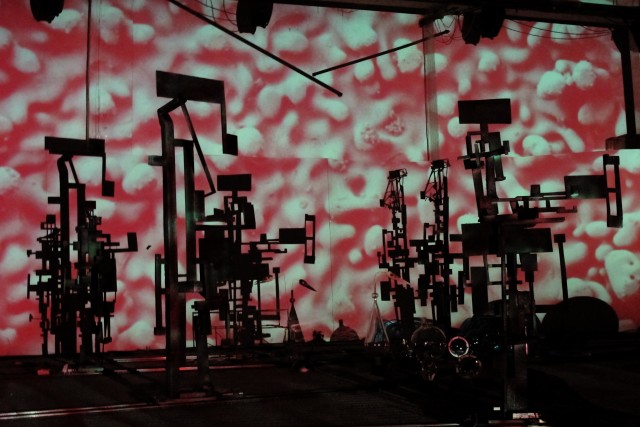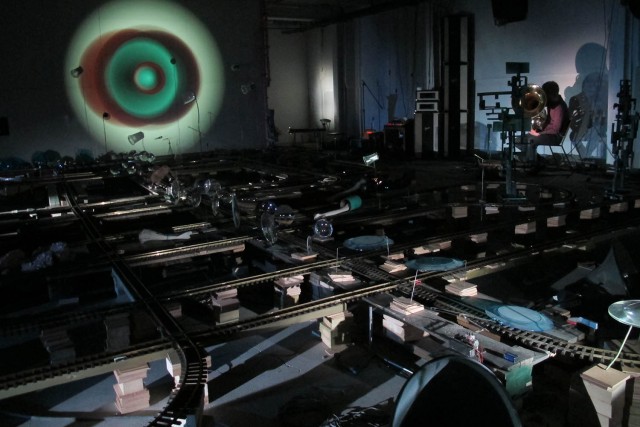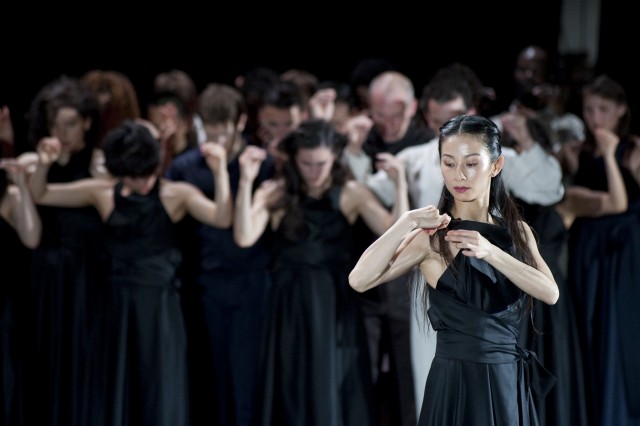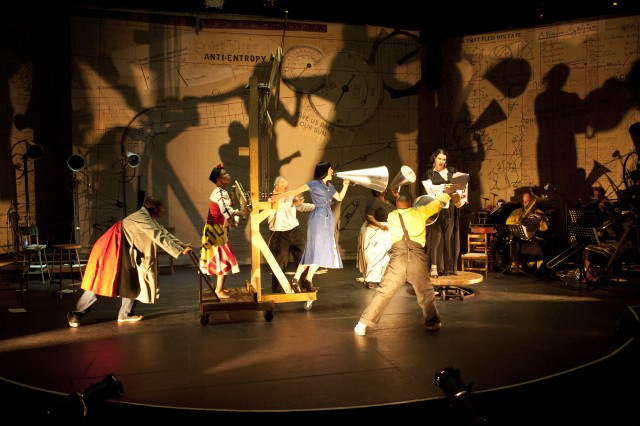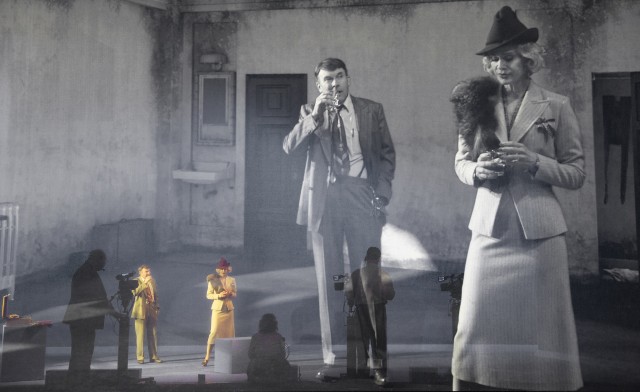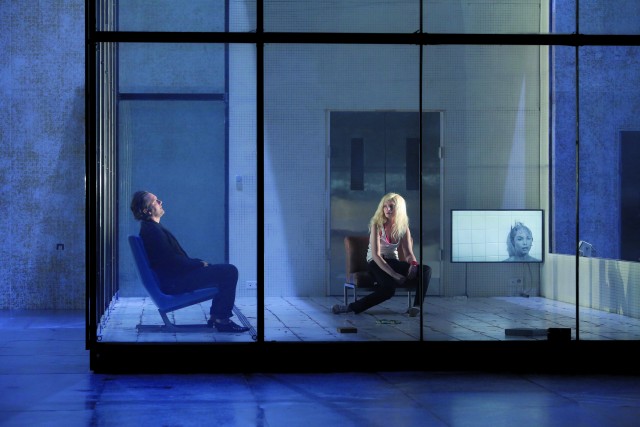
Krzysztof Warlikowski’s ambitious but bewildering PHAEDRA(S) had them running for the exits at BAM (photo by Pascal Victor/ArtComArt; courtesy of Odéon Théâtre De L’Europe)
PHAÈDRE(S)
Brooklyn Academy of Music
BAM Harvey Theater
651 Fulton St.
September 13-18, $30-$95
718-636-4100
www.bam.org
About halfway through the second act of Krzysztof Warlikowski’s three-and-a-half-hour Phaedra(s), continuing at BAM’s Harvey Theater through September 18, two people jumped over from the crowded row behind us and ran out through our far-more-empty row, barreling past us in a desperate attempt to get out of the theater as fast as they could. They probably regretted not leaving at intermission, as so many others had, allowing the rest of the audience to jockey for better seats. But even better seats didn’t significantly help Odéon-Théâtre de l’Europe’s dark and lurid multiple retelling of the Greek myth of Phaedra, the daughter of Minos and Pasiphaë and wife of Theseus who is made to fall in love with her stepson, Hippolyte, by the spurned Aphrodite. Isabelle Huppert, previously at BAM’s Next Wave Festival in 2005 in Sarah Kane’s 4.48 Psychose and in 2009 in Robert Wilson’s Quartett, plays Aphrodite, three versions of Phaedra, and Elizabeth Costello, the protagonist of J. M. Coetzee’s 2003 novel. The first act, based on writings by Wajdi Mouawad and inspired by Euripides and Seneca, inexplicably begins with the musical recitation of the Arabic poem “At-Atlal,” with no English-language translation as singer Norah Krief, dancer and choreographer Rosalba Torres Guerrero, and guitarist Grégoire Léauté turn in a head-scratching glam-rock performance. Soon Phaedra is trying to clean the blood pouring from between her legs while considering whether to bed down with Hippolyte (Gaël Kamilindi).

Isabelle Huppert appears as multiple Phaedras in Odéon-Théâtre de l’Europe production at BAM (photo courtesy of Odéon Théâtre De L’Europe)
In the second section, adapted from Kane’s Phaedra’s Love, a sloppy and messed-up Hippolyte (Andrzej Chyra), who has already slept with Phaedra’s daughter, Strophe (Agata Buzek), wants nothing to do with stepmom Phaedra no matter how much she insists on having some form of sex with him. In the third version, a talk-show host (Chyra) is interviewing writer and international lecturer Costello, the author of The House on Eccles Street, a retelling of James Joyce’s Ulysses from the point of view of his wife, Molly Bloom. Then, suddenly, about halfway through, Costello/Huppert literally lets down her hair and goes into a gorgeous, albeit brief, monologue taken from Racine’s famous 1677 version of Phaedra that momentarily makes us forget everything that has come before — Kamilindi as a barking dog, Phaedra dragging herself across the floor while grunting, Torres Guerrero strutting around the stage seemingly looking for a pole, Phaedra dry heaving into a sink, Chyra exposing his buttocks again and again, the shower scene from Psycho repeating on a small monitor, Phaedra looking on as Theseus (Alex Descas) humps her masked corpse, and annoying Warholian projections by Denis Guéguin that are reflected in mirrors on Malgorzata Szczesniak’s strange prison/locker room set, a mostly empty space save for a sink at the upper left, a shower head on the back wall, a vertical mirror in which part of the audience is visible (watching them sit openmouthed at the proceedings was somewhat interesting for a time), and a side room that occasionally slides out to the center. Those few minutes near the end reveal the heart of the story and let Huppert finally act as we know she can, and it’s probably the primary reason why the show received a wildly enthusiastic standing ovation from a crowd that was significantly smaller than it had been 210 minutes earlier.
